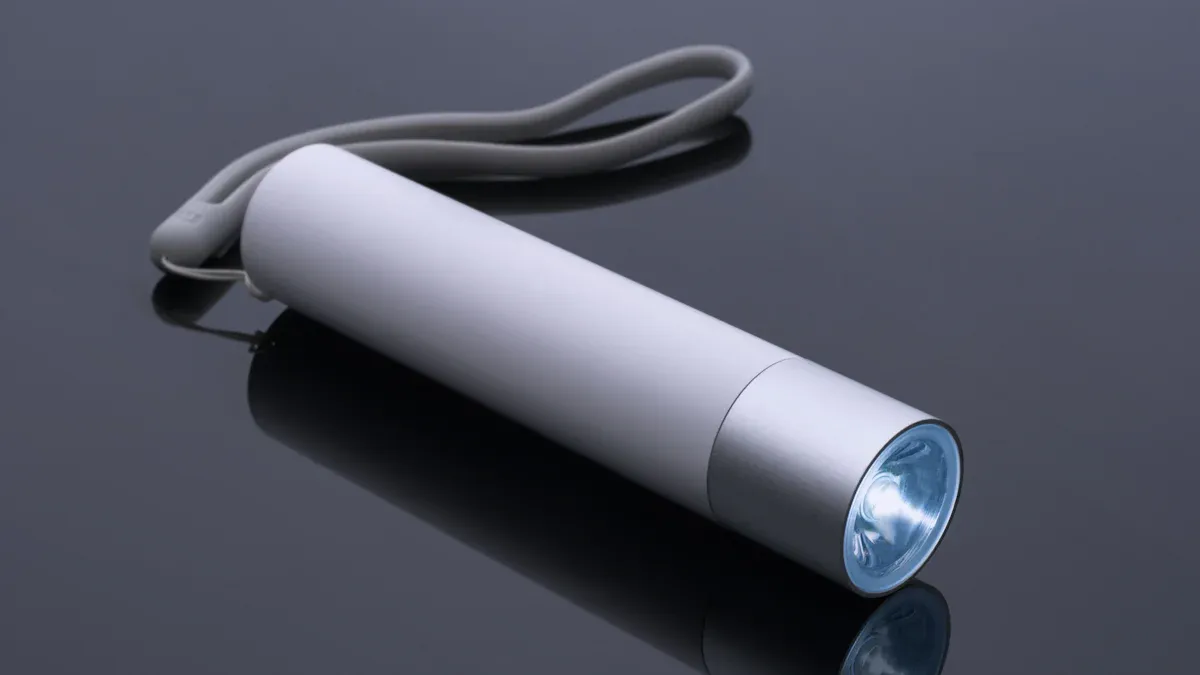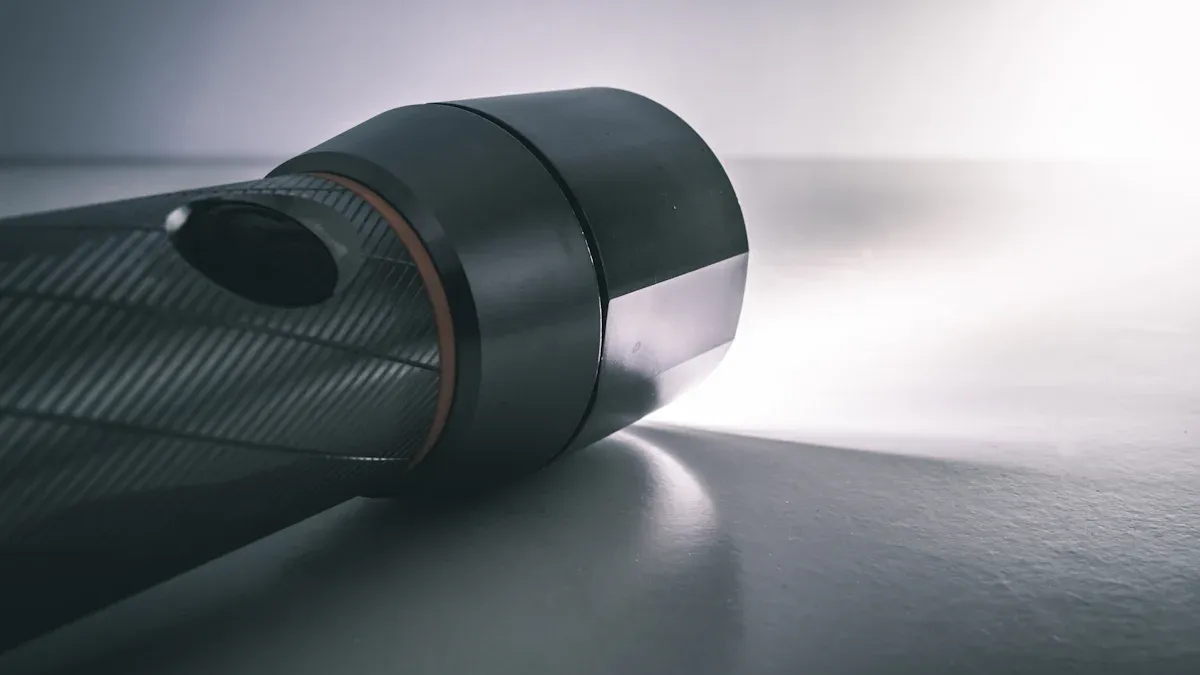Selecting the Perfect Flashlight for Your Daily Needs

A reliable flashlight is more than just a tool; it’s a daily necessity. Whether you’re searching for dropped keys or navigating a dark path, having the right light source makes all the difference. Flashlights are used almost every day, proving their importance in countless situations. To choose a flashlight that fits your needs, focus on brightness, durability, and features. For unmatched reliability, consider the Helius flashlight or the Helius headlamp. These options deliver exceptional performance for everyday use and emergencies alike.
Key Takeaways
Pick a flashlight by how bright it is and its battery. LED flashlights save energy and last longer than older ones.
Think about how strong and tough it is. Flashlights made of good materials like 7075 aluminum are harder to break.
Choose features that match what you need. Modes like strobe and SOS help in emergencies, and adjustable beams work for many tasks.
Flashlight Basics to Know

Types of Flashlights
When choosing a flashlight, understanding the different types available can help you make the right decision. Here’s a quick breakdown:
Type | Description |
|---|---|
Bulb Type | LED technology dominates the market, while incandescent bulbs like krypton are becoming rare. |
Beam Type | Options include Flood (wide coverage), Spot (focused beam), and Adjustable beams for versatility. |
Battery Type | Flashlights can use Disposable (AAA, AA, CR123A), Rechargeable (lithium-ion), or Renewable batteries. |
Each type serves a unique purpose. For example, adjustable beams are ideal for outdoor activities, while rechargeable batteries are perfect for frequent use. By understanding these options, you can select a flashlight that fits your needs.
LED vs. Incandescent Bulbs
The choice between LED and incandescent bulbs can significantly impact your flashlight’s performance. Here’s why LED bulbs are the better option:
LED flashlights are highly energy-efficient, producing about 100 lumens per watt compared to just 8-10 lumens per watt for incandescent bulbs.
They last much longer, with a lifespan of up to 50,000 hours versus 2,000 hours for incandescent bulbs.
LED bulbs provide brighter and more reliable illumination, making them suitable for various tasks.
Additionally, LED bulbs generate less heat and are more durable, making them a practical choice for everyday and emergency use. If you prefer a warmer light, warm white LED options are available to mimic the glow of incandescent bulbs.
Rechargeable vs. Disposable Batteries
Your flashlight’s power source plays a crucial role in its performance. Rechargeable batteries offer several advantages:
They are cost-effective over time and environmentally friendly due to their longer lifespan.
They provide higher power capacity, making them ideal for high-drain devices.
However, disposable batteries also have their benefits. Alkaline batteries are affordable, reliable, and have a long shelf life, making them suitable for occasional use. Lithium batteries, on the other hand, deliver brighter light and perform well in extreme temperatures.
Battery Type | Advantages | Common Sizes |
|---|---|---|
Lithium Batteries | High energy density, long shelf life, performs well in extreme conditions | 18650, 26650, 21700, etc. |
NiMH Batteries | Rechargeable, cost-effective, versatile | AA, AAA, C, D, 9V block |
Choosing between rechargeable and disposable batteries depends on how often you use your flashlight and the conditions in which you’ll use it.
Key Features to Look For
Brightness and Beam Distance
When selecting a flashlight, brightness and beam distance are two of the most critical features to consider. Brightness, measured in lumens, determines how much light the flashlight emits. The ideal brightness depends on your intended use:
Use Case | Ideal Brightness (Lumens) |
|---|---|
Work Light | 90-500 |
General Purpose | 50-100 |
Night Running and Camping | 100-500 |
Beam distance, on the other hand, affects how far the light reaches. This feature is especially important for outdoor activities or emergency situations. Use the table below to match lumens with beam distance and their best applications:
Lumens | Distance | Best For |
|---|---|---|
1–250 | Up to 80 meters | Everyday and leisure activities in dim conditions |
160–400 | Up to 100 meters | Camping, hiking, backpacking |
400–1000 | Up to 200 meters | Hiking, backpacking, caving, campervan engine repair |
Choosing the right combination of brightness and beam distance ensures optimal performance for your needs.
Battery Life and Efficiency
Battery life, or runtime, directly impacts the flashlight’s performance. Several factors influence battery efficiency:
Extreme temperatures can reduce battery performance.
The drainage rate determines how quickly the battery discharges.
Proper installation and maintenance extend battery life.
For frequent use, rechargeable batteries provide better efficiency and cost savings. However, disposable batteries are ideal for occasional use due to their long shelf life.
Durability and Build Quality
Durability is essential for a flashlight that can withstand tough conditions. High-quality materials like 7075 aluminum offer excellent durability and resistance to damage. Here’s a quick comparison of materials:
Material Type | Durability Impact |
|---|---|
7075 Aluminum | High durability, resistant to damage |
6061 Aluminum | Good durability, commonly used |
Cheaper Materials | Reduced lifespan, less durable |
Flashlights designed with hardened materials can survive drops and rough handling. Always look for models that undergo extensive durability testing to ensure reliable performance.
Additional Features and Modes
Modern flashlights come with additional features that enhance their functionality. Waterproofing protects the flashlight in wet conditions, while strobe mode increases visibility during emergencies. Some models even include SOS mode for distress signaling.
Flashlight Mode | Functionality | Ideal Situations |
|---|---|---|
Spotlight Mode | Long-distance illumination | Navigating outdoor spaces, signaling for help |
Floodlight Mode | Wide-area illumination | Camping, outdoor gatherings, working in dimly lit spaces |
Strobe Mode | Attracting attention | Emergency signaling |
SOS Mode | Distress signaling | Emergency situations requiring assistance |
These features make your flashlight more versatile and adaptable to various scenarios.
How to Choose a Flashlight for Your Needs

Everyday Carry Flashlights
An everyday carry flashlight is a practical tool that ensures you’re never left in the dark. When selecting one, focus on these key factors:
Lumens and Brightness: Choose a flashlight with 500-2000 lumens for versatile use. This range provides enough brightness for both close-up tasks and outdoor needs.
Battery Life and Power Source: Opt for rechargeable flashlights to save money and reduce waste. They offer consistent performance for everyday use.
Size and Portability: A compact design, about 5 inches long with a 1-inch diameter, fits easily in your pocket or bag. Look for features like a pocket clip for added convenience.
Popular models like the Fenix PD35 V3 stand out for their simplicity and performance. A high-quality flashlight with a tail switch and durable build ensures reliability in any situation.
Outdoor Activities and Emergency Use
For outdoor activities, you need a flashlight that’s rugged and dependable. Look for these features:
Durability and Water Resistance: A flashlight with a sturdy build and waterproof rating can handle harsh environments.
Special Modes: Strobe and SOS modes are essential for emergencies, providing visibility and signaling for help.
Compact Design: Lightweight flashlights are easier to carry during hikes or camping trips.
Emergency flashlights differ from standard ones by offering higher brightness levels, rechargeable batteries, and advanced modes. These features make them indispensable for outdoor adventures and critical situations.
Feature | Emergency Flashlights | Standard Flashlights |
|---|---|---|
Durability | Built for high durability with strong materials | Generally less durable, designed for everyday use |
Brightness Levels | Higher outputs, often exceeding 1000 lumens | Outputs typically between 50 and 300 lumens |
Special Modes | May include strobe, SOS, and beacon modes | Usually limited to basic on/off functionality |
Hands-Free Lighting with Helius Headlamp
The Helius Headlamp is perfect for hands-free lighting during outdoor activities or detailed tasks. Its lightweight design and adjustable straps ensure a comfortable fit for extended use. Whether you’re setting up a tent or repairing machinery, this headlamp keeps your hands free for the job.
Feature | Benefit |
|---|---|
Comfortable Fit | Allows extended use without discomfort |
Adjustable Straps | Ensures stability during movement |
Lightweight Design | Reduces fatigue during prolonged use |
Headlamps like the Helius Headlamp enhance safety and efficiency, making them ideal for camping, hiking, or nighttime walks.
Versatility of the Helius Flashlight
The Helius Flashlight combines durability, portability, and functionality, making it one of the best flashlights for various needs. Its titanium construction ensures strength while keeping it lightweight. Multiple lighting modes, including high, medium, low, strobe, and SOS, adapt to any situation.
This rechargeable flashlight eliminates the hassle of battery replacements, reducing environmental impact. Its compact size and keychain attachment make it perfect for everyday use, outdoor activities, and emergencies. With a powerful 700-lumen output, the Helius Flashlight delivers the strongest portable beam for its size.
Tip: Always choose a flashlight that balances performance and portability to meet your specific needs.
Choosing the right flashlight ensures you’re prepared for any situation. Focus on brightness, battery life, and durability to match your needs. Helius products stand out with their rugged build, powerful brightness, and versatile features. Outdoor enthusiasts and professionals trust their reliability. Upgrade your lighting experience with Helius for unmatched performance.
FAQ
What is the ideal flashlight brightness for everyday use?
For daily tasks, choose a flashlight with 50-200 lumens. This range provides sufficient light for most activities without draining the battery quickly.
How do I maintain my flashlight for long-term use?
Clean the lens and contacts regularly. Store it in a dry place. Recharge or replace batteries promptly to prevent corrosion and ensure optimal performance.
Why should I consider the Helius flashlight over others?
The Helius flashlight offers unmatched durability, multiple lighting modes, and eco-friendly rechargeable batteries. Its compact design ensures convenience for everyday use and emergencies.
Tip: Always invest in a flashlight that balances performance, durability, and portability for the best value.
See Also
Discover Your Ideal Flashlight for Daily Use
Selecting the Best EDC Flashlight for Holiday Presents
Tips for Selecting the Ideal Headlamp Flashlight
